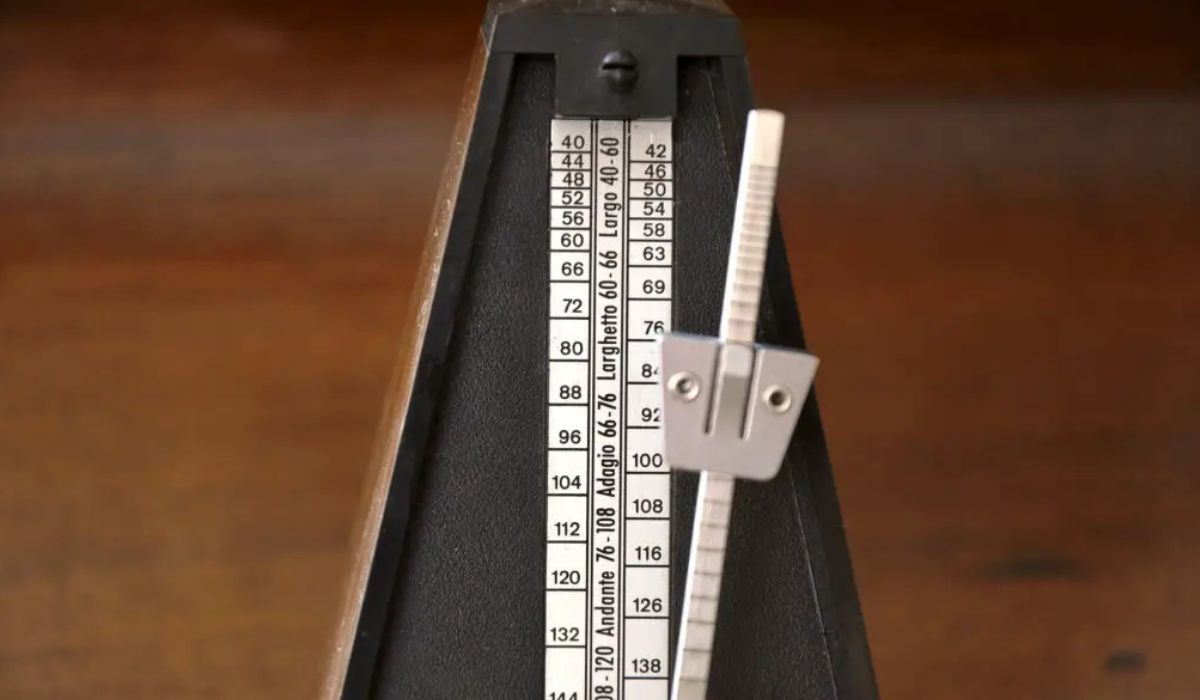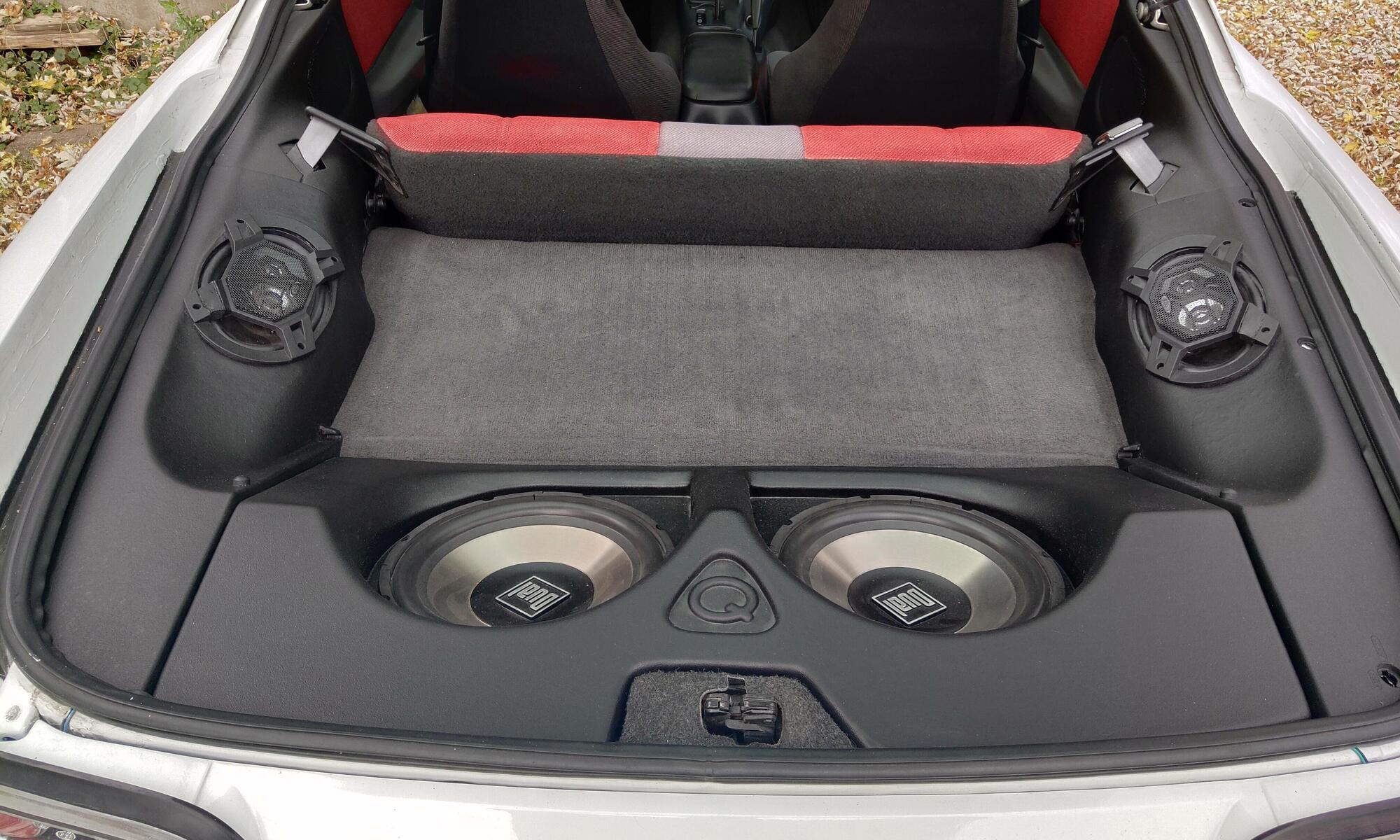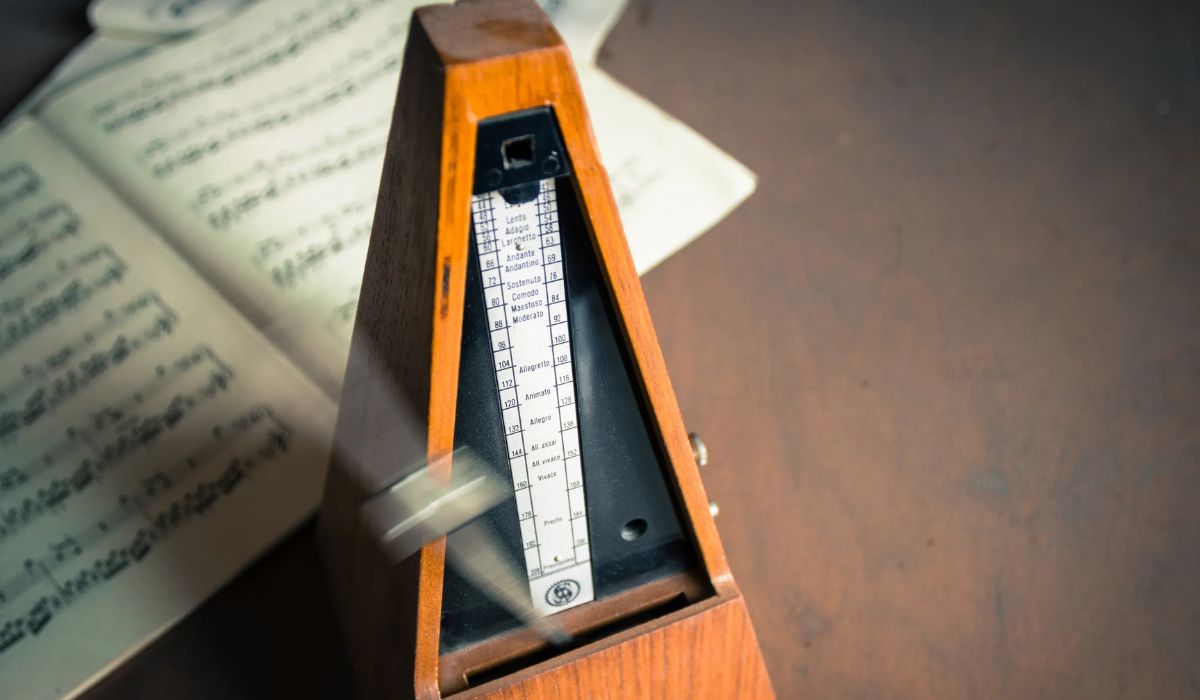Home>Production & Technology>Metronome>How Long Will A Metronome Run


Metronome
How Long Will A Metronome Run
Published: January 13, 2024
Discover how long a metronome can run and keep perfect time with this comprehensive guide. Learn more about metronomes and their durability.
(Many of the links in this article redirect to a specific reviewed product. Your purchase of these products through affiliate links helps to generate commission for AudioLover.com, at no extra cost. Learn more)
Table of Contents
Introduction
Metronomes have long been a trusted tool for musicians, helping to keep time and maintain a consistent rhythm while practicing and performing. These small devices play a crucial role in the world of music, but have you ever wondered how long a metronome can run before needing a battery change or a power source recharge?
In this article, we will delve into the mechanics of a metronome and explore the various power source options available. We will also discuss the factors that can affect the battery life of a metronome and offer tips on maximizing its longevity. Additionally, we will touch upon alternative power options for those seeking alternatives to traditional batteries.
Whether you are a professional musician, a music student, or simply someone interested in the inner workings of a metronome, this article aims to provide you with valuable insights and information.
So let’s dive in and uncover the mysteries of how long a metronome can run!
The Mechanics of a Metronome
Before we discuss how long a metronome can run, it’s important to understand its basic mechanics and how it operates.
A metronome consists of a pendulum or an electronic mechanism that produces regular ticks or beats at a set tempo. Traditional metronomes use a pendulum that swings back and forth, while modern ones utilize electronic circuitry to produce the same effect. The beats produced by the metronome serve as a guide for musicians to keep time with their instrument.
The tempo, or speed, of the beats is adjustable and can be set according to the specific musical piece or practice session requirements. This allows musicians to maintain a consistent rhythm and improve their timing skills.
Metronomes also often feature additional functions such as different time signatures, subdividing the beats, and even accentuating certain beats to enhance practice sessions and performances further.
Now that you have a basic understanding of how a metronome works, let’s explore the different power source options available for metronomes.
Power Source Options
When it comes to powering a metronome, there are several options available, depending on the model and design. Let’s take a look at the most common power source options for metronomes:
- Battery-Powered: Many metronomes are powered by batteries, typically AA or AAA. These battery-powered metronomes offer convenience and portability, allowing musicians to use them anywhere without the need for a power outlet. However, it’s important to note that battery life can vary depending on factors such as usage, tempo, and additional features.
- AC Power Adapter: Some metronomes come with an AC power adapter option, allowing them to be plugged into a power outlet for continuous use. This option is great for musicians who primarily use their metronome in a fixed location, such as a studio or practice room.
- USB Power: Certain modern metronome models can be powered through a USB port. This option is convenient for musicians who already have USB power sources available, such as a laptop or portable power bank.
- Solar-Powered: In recent years, solar-powered metronomes have also entered the market. These metronomes have small solar panels that convert light into energy, eliminating the need for traditional battery replacements. Solar-powered metronomes are an eco-friendly option and ideal for outdoor use or places with ample natural light.
Each power source option has its own advantages and considerations in terms of convenience, sustainability, and longevity. Battery-powered metronomes, in particular, are widely used due to their portability and ease of use. However, the lifespan of the batteries used in a metronome can greatly affect its runtime.
In the next section, we will discuss the expected battery life of metronomes and the factors that can impact it.
Battery Life Expectancy
When it comes to battery life in metronomes, there isn’t a one-size-fits-all answer. The exact battery life can vary depending on various factors, including the type of batteries used, the tempo setting, additional features used, and the overall usage pattern.
In general, disposable batteries in a metronome can last anywhere from a few hours to several months, depending on the factors mentioned above. For example, a metronome set at a slower tempo with basic features may have a longer battery life compared to one set at a faster tempo with additional features like subdivisions or accentuations.
It’s important to note that battery life expectancy is typically provided by the manufacturer based on standard usage conditions. However, individual usage patterns and preferences can greatly impact the actual battery life experienced.
For musicians who use the metronome extensively or for long practice sessions, it’s advisable to keep spare batteries on hand or consider alternative power options to ensure uninterrupted practice or performance sessions.
Now that we have explored the battery life expectancy, let’s move on to discuss the various factors that can affect the battery life of a metronome.
Factors Affecting Battery Life
Several factors can influence the battery life of a metronome. Understanding these factors can help musicians make informed decisions about power management and maximize the runtime of their metronomes. Let’s take a closer look at the key factors affecting battery life:
- Usage Time: The amount of time the metronome is actively in use plays a significant role in battery consumption. The longer the metronome is running, the more it will drain the battery. Extended practice sessions or performances without breaks can significantly impact battery life.
- Tempo and Beats per Minute: The tempo setting and beats per minute (BPM) directly impact the battery consumption. Higher tempos and BPMs require more power to produce the faster beats, which can reduce battery life compared to slower tempo settings.
- Additional Features: Some metronomes offer advanced features such as subdivisions, accentuated beats, or even built-in speakers. These additional features consume more power and can shorten the battery life compared to basic metronomes without such features.
- Display Usage: Metronomes with LCD screens or LED displays require power to illuminate the display, which can contribute to higher battery consumption. Dimming the display or toggling off the backlight when not needed can help conserve battery life.
- Battery Type: The type of batteries used in the metronome can also affect battery life. Disposable alkaline batteries generally have a longer lifespan compared to cheaper or lower-quality batteries. Investing in high-quality batteries can result in improved battery performance.
By considering these factors, musicians can make adjustments to optimize battery life and ensure that the metronome runs for a longer period without the need for frequent battery changes or recharges.
In the next section, we will explore the difference between rechargeable and disposable batteries and their impact on the overall longevity of a metronome.
Rechargeable vs. Disposable Batteries
When it comes to choosing batteries for your metronome, you may have the option to use either disposable or rechargeable batteries. Each type has its own advantages and considerations, so let’s explore the differences between the two:
Disposable Batteries:
Disposable batteries, such as alkaline or lithium batteries, are commonly used in metronomes. They are readily available, affordable, and easy to replace. One of the key advantages of disposable batteries is their longer shelf life, making them ideal for infrequently-used metronomes. However, as the name suggests, these batteries are designed for single-use and must be disposed of properly after they are depleted. Constantly purchasing disposable batteries can become costly over time and may not be the most environmentally friendly option.
Rechargeable Batteries:
Rechargeable batteries, on the other hand, offer a more sustainable and cost-effective alternative. These batteries can be used repeatedly, eliminating the need for constant battery replacements. By using a compatible charger, you can recharge them when they are depleted, reducing waste and saving money in the long run. It is important to note that rechargeable batteries generally have a lower capacity compared to disposable batteries, meaning they may not last as long in a single charge. However, with regular recharging and proper management, rechargeable batteries can still provide sufficient power for extended metronome usage.
Choosing between disposable and rechargeable batteries ultimately depends on individual preferences, usage patterns, and environmental considerations. If you are someone who frequently uses a metronome or uses it for long periods, rechargeable batteries could be a more sustainable and cost-effective option. However, if you use your metronome infrequently, disposable batteries may be more convenient since they have a longer shelf life.
Regardless of the battery type you choose, it’s important to remember proper battery disposal and recycling practices to minimize environmental impact.
In the next section, we will provide some tips for maximizing the battery life of your metronome.
Maximizing the Battery Life
To ensure that your metronome runs for as long as possible on a single battery charge or replacement, there are several tips you can follow to maximize its battery life:
- Adjust the Brightness: If your metronome has a backlight or display, try reducing the brightness or turning it off when it’s not needed. Dimming the display can significantly reduce battery consumption.
- Use Lower Volume: If your metronome has adjustable volume settings, using a lower volume level can help conserve battery power. Consider using headphones if you’re practicing in a noisy environment.
- Limit Display Time: Some metronomes have a display that automatically turns off after a certain period of inactivity. If your metronome has this feature, enable it to conserve battery power when you’re not actively adjusting settings.
- Use Basic Settings: Advanced features like subdivisions and accentuated beats can be useful, but they also consume more battery power. If you’re not using these features, stick to the basic metronome settings to extend battery life.
- Turn It Off: When you’re done using the metronome, remember to turn it off completely. Leaving it in standby or idle mode can still drain the battery over time.
- Keep It Clean and Dry: Moisture or dirt build-up can cause battery drain or damage to the internal components of the metronome. Regularly clean and dry your metronome to ensure optimal battery performance.
- Store It Properly: If you won’t be using your metronome for an extended period, remove the batteries and store them separately in a cool, dry place. This helps prevent battery leakage or corrosion, which can affect performance and battery life.
By applying these tips, you can significantly extend the battery life of your metronome and minimize the need for frequent battery changes or recharges.
Now that we’ve explored various ways to maximize battery life, let’s discuss alternative power options for metronomes.
Alternative Power Options
In addition to traditional battery-powered metronomes, there are alternative power options available for those seeking alternatives or a more sustainable approach. Let’s explore some of these alternative power options:
- AC Power Adapter: If your metronome supports it, using an AC power adapter can provide a continuous power source without the need for batteries. This is particularly useful if you mainly use your metronome in a fixed location, such as a studio or practice room.
- USB Power: Some metronomes have a USB port that allows them to be powered through a USB connection. This option is convenient if you have a readily available USB power source, such as a laptop or portable power bank.
- Solar-Powered: Solar-powered metronomes have emerged as an eco-friendly option in recent years. These metronomes are equipped with small solar panels that convert light into energy to power the device. Solar-powered metronomes are particularly useful for outdoor use or in well-lit environments, eliminating the need for traditional batteries or power sources.
- Rechargeable Built-In Battery: Some metronomes come with a built-in rechargeable battery that can be charged using an AC power adapter or USB connection. These metronomes offer the convenience of not having to constantly replace batteries and can be recharged whenever needed.
These alternative power options provide flexibility and sustainability for musicians who prefer not to rely solely on disposable batteries. They can provide a reliable and continuous power source for your metronome, allowing you to focus on your practice or performance without worrying about battery life.
Remember to check the compatibility and availability of these alternative power options before purchasing a metronome, as not all models may offer these features.
Now that we’ve explored various power options, let’s conclude our discussion.
Conclusion
A metronome is a valuable tool for musicians, helping them maintain a steady tempo and improve their timing skills. When it comes to powering a metronome, there are several options available, including battery-powered, AC power adapter, USB power, and even solar-powered metronomes.
The battery life of a metronome can vary depending on factors such as usage time, tempo, additional features, and battery type. Disposable batteries offer convenience and longer shelf life, while rechargeable batteries provide a more sustainable and cost-effective option. By considering factors like adjusting brightness, limiting display time, and using basic settings, you can maximize the battery life of your metronome.
Alternative power options such as AC power adapters, USB power, and solar-powered metronomes offer flexibility and sustainability. These options can provide a continuous power source without the need for constant battery replacements.
Whether you opt for traditional batteries or alternative power options, it’s important to choose a power source that suits your usage patterns, preferences, and environmental considerations.
In conclusion, understanding the mechanics of a metronome, exploring power source options, and knowing how to maximize battery life can help you make informed decisions when it comes to powering your metronome. Consider your specific needs, musical requirements, and sustainability goals to choose the best power source for your metronome and enjoy uninterrupted practice sessions and performances.
Remember, the longevity of a metronome’s runtime depends on various factors, but by implementing the tips and techniques discussed in this article, you can make the most out of your metronome and stay in rhythm like never before.











